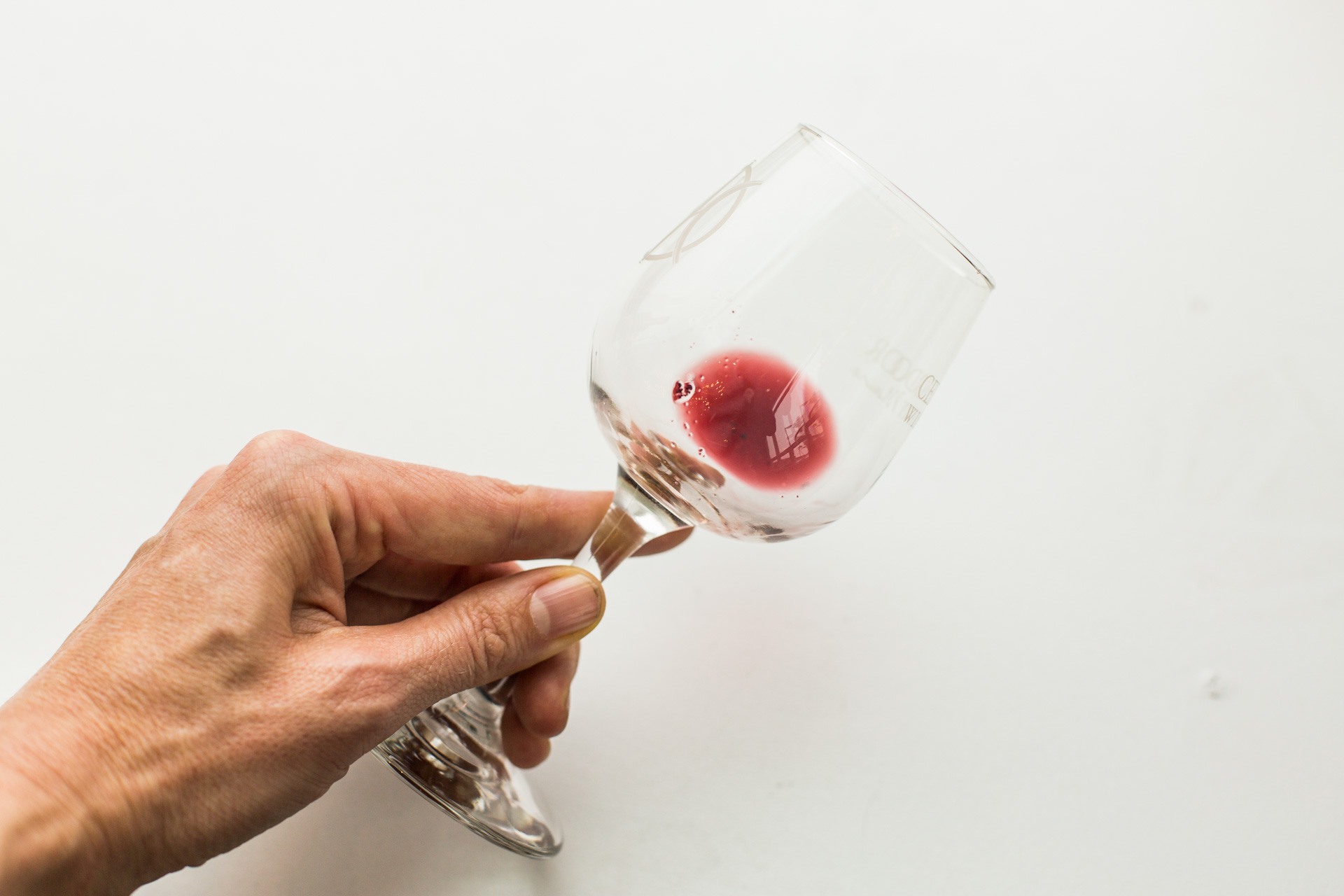
Spotting sediment in red wine? It can appear as fine grains or darker stains along the bottle, a natural sign of aging in bold, rich wines.
High-tannin, full-bodied reds like our 2018 Aurora and 2017 Sewell often develop sediment over time. This is completely normal and natural; it’s a harmless byproduct of the wine aging process. These gritty bits don’t harm you or the quality of the wine—in fact, they’re often a sign of a well-crafted, maturing wine.
What is Sediment?
Sediment usually falls into two categories: colloids and tartrates. Colloids are smaller, grainy particles composed of pigment, polysaccharides, and proteins that form gradually in wines intended for aging. They develop very slowly, often appearing only after several years, regardless of whether the wine has been fined or filtered. Tartrate crystals (sometimes called “wine diamonds”) form when naturally occurring tartaric acid binds with potassium under cool conditions. Since we store our wines at cooler temperatures to slow down aging, this can promote sediment formation, especially in highly structured reds. As Ronn Wiegand, Master of Wine and Master Sommelier, wisely puts it: “Tartrate crystals are as natural to wine as seeds are to a watermelon.”
Why the Bottle Stains
In deeply pigmented wines, sediment can be incredibly fine and sometimes just a stain inside the bottle rather than noticeable particles. The 2018 Aurora, with its 49% Syrah, 33% Cabernet Sauvignon, and 18% Petite Sirah blend, is especially rich in color and tannin. Over time, these characteristics contribute to staining and fine sediment, but rarely leave anything behind in the glass. You’ll see a deep red stain along the bottle walls and cork, which is entirely normal and a result of the wine’s vibrant tannins and pigments.
How to Handle Sediment
If you’re sensitive to sediment in your glass, a decanter is your best friend. Before decanting, stand the bottle upright for a few hours (or as long as you can manage). When pouring into the decanter, do so slowly and carefully, stopping as soon as you see sediment near the neck of the bottle.
In a pinch? A tea strainer can also be used over your wine glass to catch any remaining particles, though it might not capture the finest sediment.
Appreciate the Sign of a Well-Aged Wine
Sediment and staining are part of a wine’s natural aging process, especially with wines as bold and full-bodied as the ‘18 Aurora. These markings in the bottle aren’t flaws—they’re signs that the wine has been crafted with depth and structure and is evolving beautifully.
So, keep calm and drink on, knowing that these signs only add to the wine’s character!
